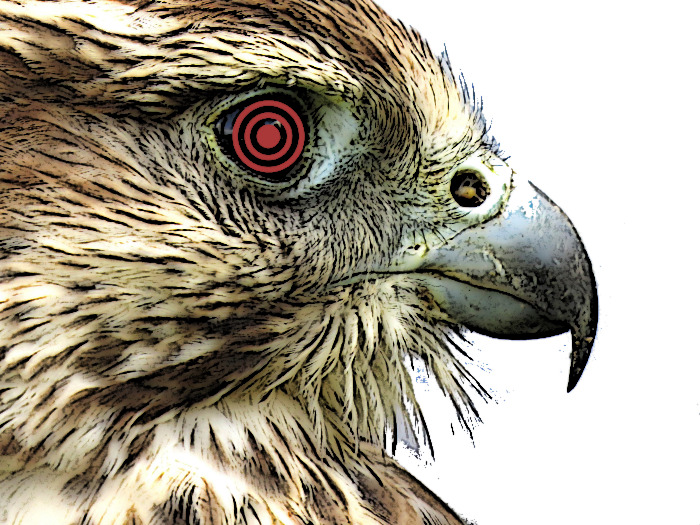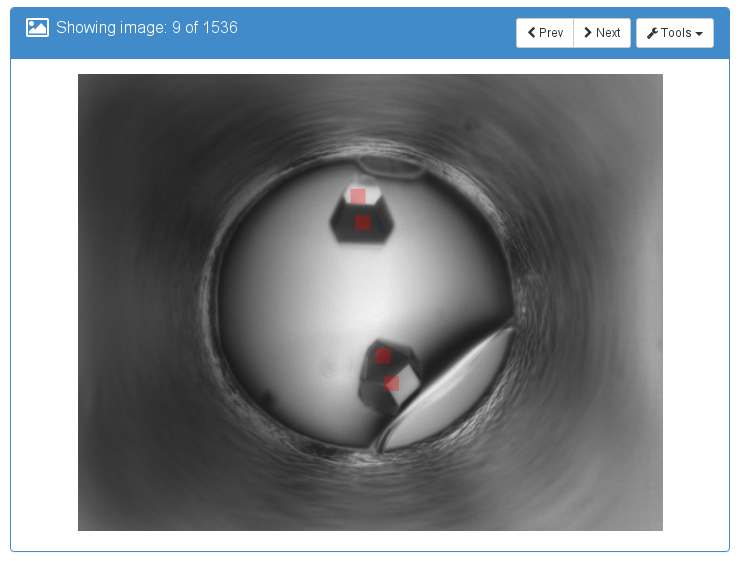In the field of X-ray crystallography, images obtained from crystallization experiments need to be interpreted for successful outcomes (crystals). If success occurs, images of mounted crystals are later used to position them appropriate to the X-ray beam for diffraction analysis.
Harrier is a web application optimized for touch screen devices that provides a haptic interface to the visualization, classification, and notation of experimental crystallization data. Images from crystallization outcomes are presented allowing the user to select features of the image. The positions are captured by Harrier and converted to coordinates of the screening plate. The set of features can be exported using a REST based endpoint and used by a mounting robot for X-ray evaluation of the initial screening result.
Harrier links the analysis of crystallization outcomes to the subsequent diffraction analysis eliminating an initial optimization step and enabling crystallization screening plates to be analyzed in the beam efficiently.
Live demo here.
Installing from source:
$ git clone git://github.com/ubccr/harrier.git harrier $ cd harrier $ pip install -r requirements.txt $ python setup.py install
Run Harrier in Docker container:
$ docker build -t harrier .
$ docker run -it --rm --name harrier \
-p 5000:5000 harrier runserver --host=0.0.0.0
Note Any targets you create will be stored in memory only. To store targets in a database see next section.
Run the harrier web server:
$ harrier runserver [INFO] * Running on http://127.0.0.1:5000/
Open your web browser to http://127.0.0.1:5000/
Import image set library. Upload an image set library in CSV format.
Add Targets. Use the interface to click on image features. The coordinates of each target will be saved.
Share. Export the image feature targets and share with external services, for example an X-ray beam etc.
First create database directory and configuration file:
$ mkdir target-data $ cd target-data $ vim harrier.cfg import os _basedir = os.path.abspath(os.path.dirname(__file__)) SQLALCHEMY_DATABASE_URI = 'sqlite:///' + os.path.join(_basedir, 'harrier.db')
Create empty databse, run the server:
$ harrier -c /path/to/target-data/harrier.cfg db rebuild $ harrier -c /path/to/target-data/harrier.cfg runserver [INFO] * Running on http://127.0.0.1:5000/
Open your web browser to http://127.0.0.1:5000/ and load image set. Any targets you add will be saved to the harrier.db sqlite database and persist after Harrier is shutdown.
Image set libraries can be imported in a simple CSV format. The fields are as follows:
[image name],[image url],[category]
The last field (category) is optional. For example, lysozyme images from plate X000014542 are stored in a file called X000014542-images.csv:
1488,http://localhost/drops/X000014542/X0000145421488201407081119.jpg 1175,http://localhost/drops/X000014542/X0000145421175201407081123.jpg 61,http://localhost/drops/X000014542/X0000145420061201407081137.jpg
See the data/ directory from the harrier source distribution. To import from the command line run:
$ harrier -c /path/to/target-data/harrier.cfg load -f X000014542-images.csv
To run Harrier using uWSGI:
$ pip install uwsgi $ cd [path to harrier] $ uwsgi --socket 127.0.0.1:5000 --protocol=http -w wsgi:application
Harrier is released under the GNU General Public License ("GPL") Version 3.0. See the LICENSE file.

